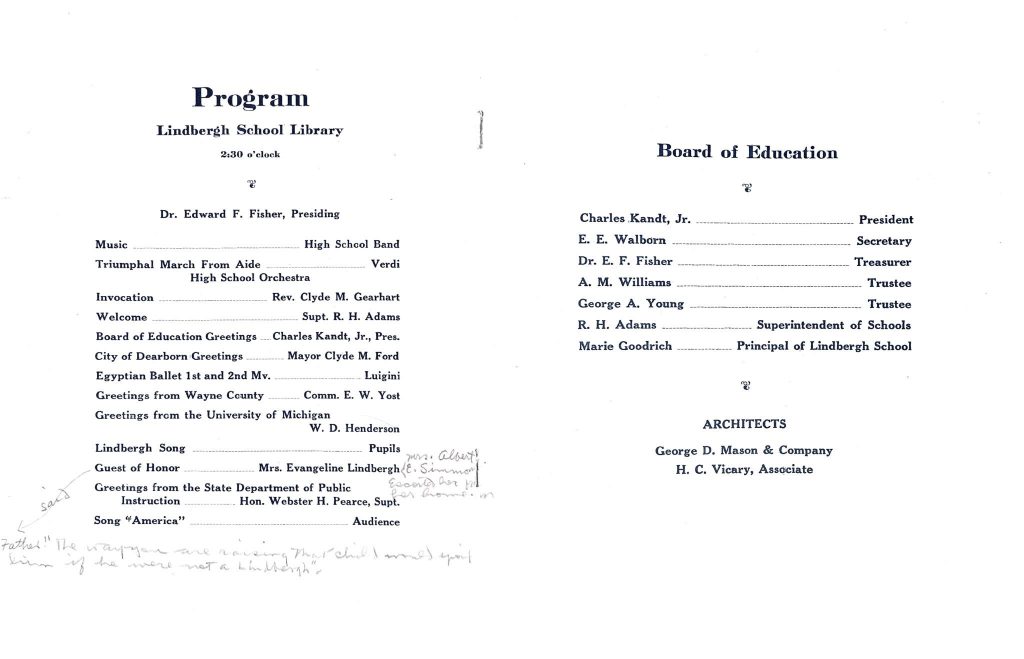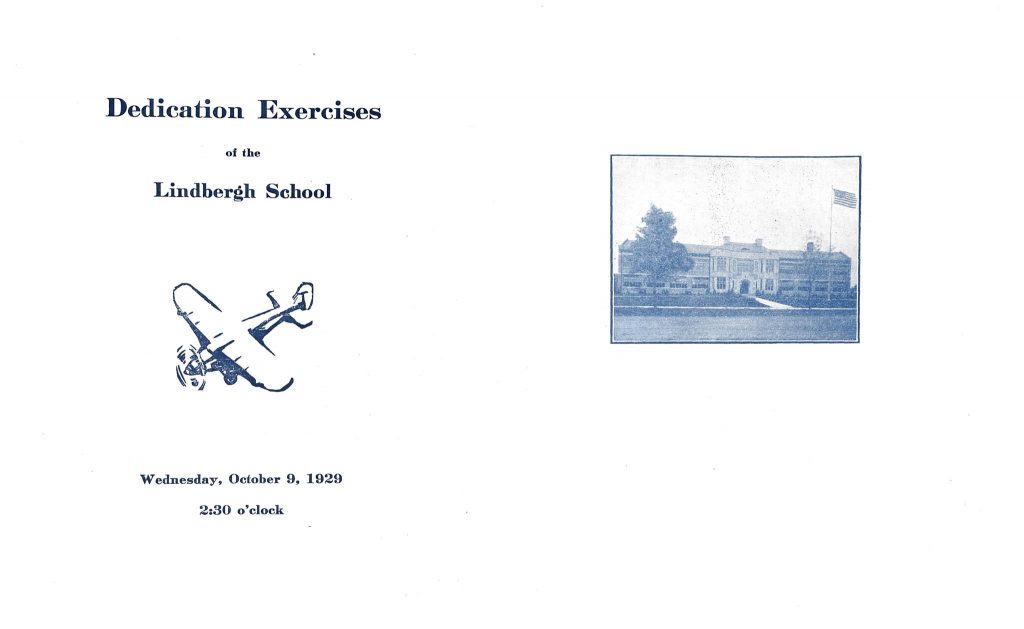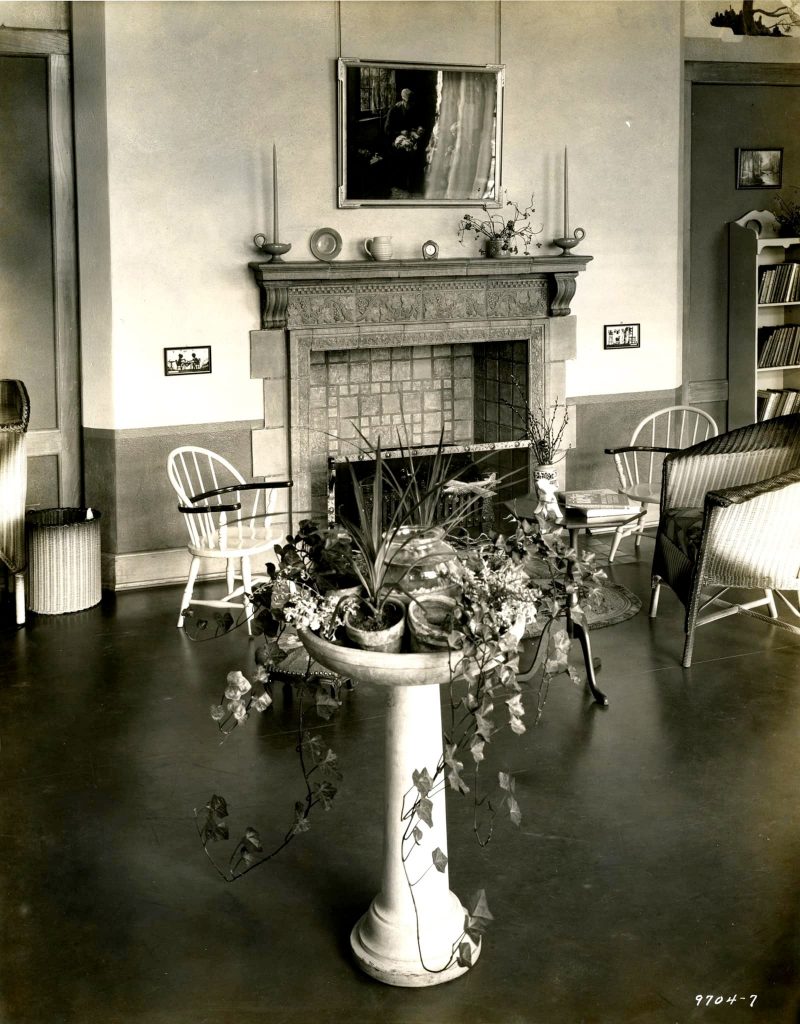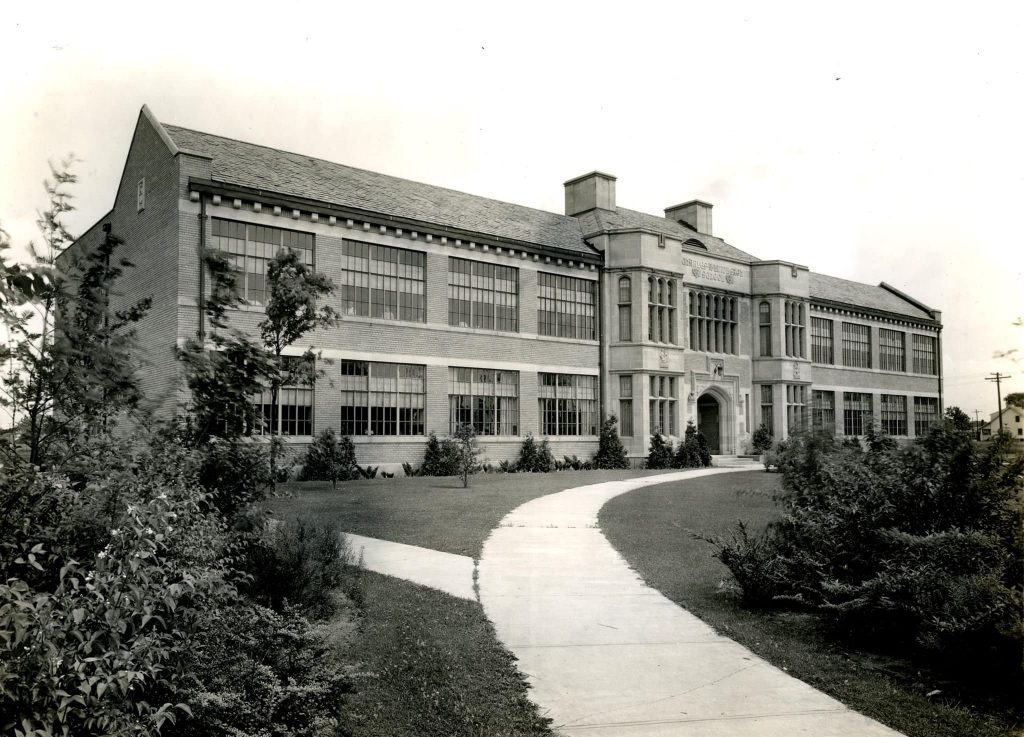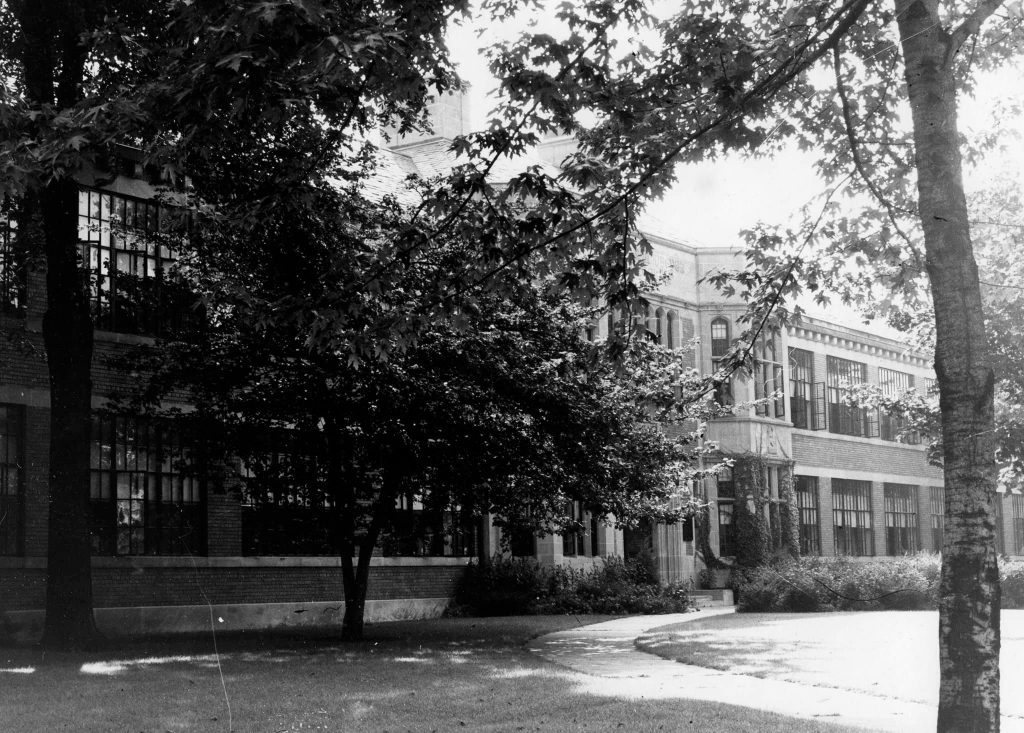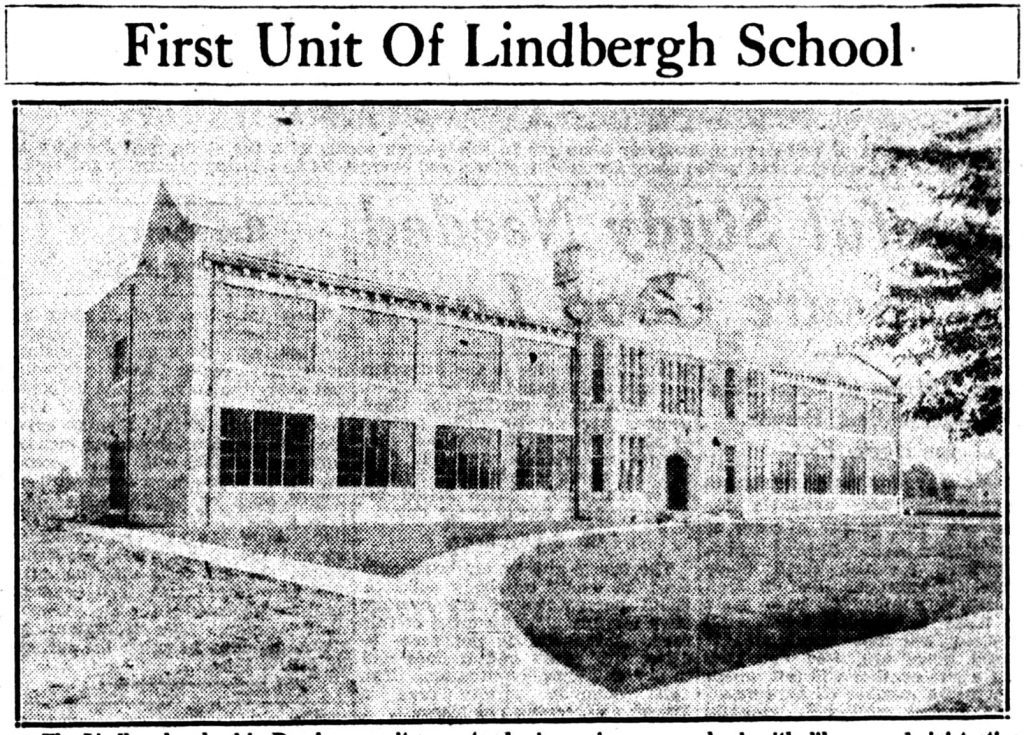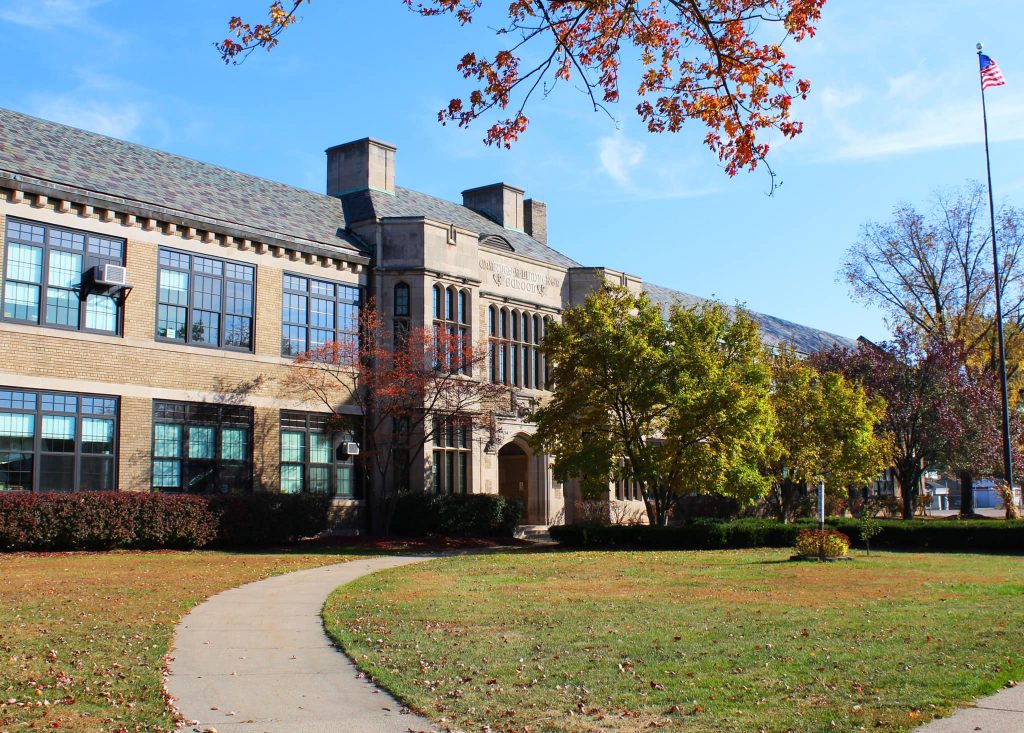Lindbergh History From The Dearborn Historical Museum
Lindbergh Families,
Check out an article that was published by the Dearborn Historical Museum about Lindbergh Elementary. There’s also an article attached from Mr. Hutchison, the Managing Editor of the Dearborn Historian, the quarterly of the Dearborn Historical Museum.
Enjoy!
Charles A. Lindbergh Elementary School / Collegiate Gothic / 1928
In 1928, after beautiful new schools sprouted across the City of Fordson (now east Dearborn), modern-day northwest Dearborn got its own educational landmark: Lindbergh Elementary School. Like its predecessors, Lindbergh has remained a favorite among Dearborn students for almost a century.
Lindbergh was remarkable from the beginning. Said to be the “first [school] in Michigan named for the ‘Flying Colonel,’” it was erected between 1928 and 1929 at a cost of $125,000. It was designed by Dearborn Architect Harry C. Vicary, of George D. Mason’s firm, and features intricate stonework modeled by sculptor Corrado Parducci.
Mrs. Evangeline L.L. Lindbergh, Charles Lindbergh’s mother, was the distinguished guest of dedication ceremonies held on October 9, 1929. The “elaborate program,” arranged by Dr. Edward F. Fisher, featured speeches by Mayor Clyde Ford and Board of Education President Charles Kandt Jr., among others. Meanwhile, Mrs. Lindbergh’s visit was honored by a dinner at the Dearborn Country Club and a personal tour of Greenfield Village.
Lindbergh’s success is almost entirely owed to Dearborn Superintendent Ray H. Adams, as well as the burgeoning population of Dearborn’s Highland neighborhood. This passage, published in 1979, captures its origins and a bygone moment in west Dearborn’s development:
“Named after the famous aviator, the Lindbergh School was begun in 1928 in an area of Dearborn known as ‘the sticks.’ The area around the southeast corner of Telegraph and Cherry Hill was just beginning to develop and parents were concerned that there was not a neighborhood school.
“A local real estate developer offered the Dearborn Board of Education a small piece of land… and the Board approved building a four-room school. However, Superintendent Ray Adams farsightedly pushed for the building of an eight-room school. [He] could see the community beginning to develop and as a result of his urging a larger school was built on Waverly Street.”
Ray Adams’ foresight paid off, and Lindbergh has remained a jewel of Dearborn’s Highland neighborhood to this day. Additions in 1940, 1948 and 1954 helped it keep up with the Baby Boom, and thanks to the recent addition of original-looking windows, Lindbergh’s place in Dearborn history has never been clearer.
1929 photo from the Detroit Free Press archives; 1928 aerial photo from the Collections of The Henry Ford; and 1960’s photo from the Dearborn Historical Museum.
![]() by Ian Tomashik; research by Tara Gnau and Ian Tomashik
by Ian Tomashik; research by Tara Gnau and Ian Tomashik
Dearborn School History (including Lindbergh)
